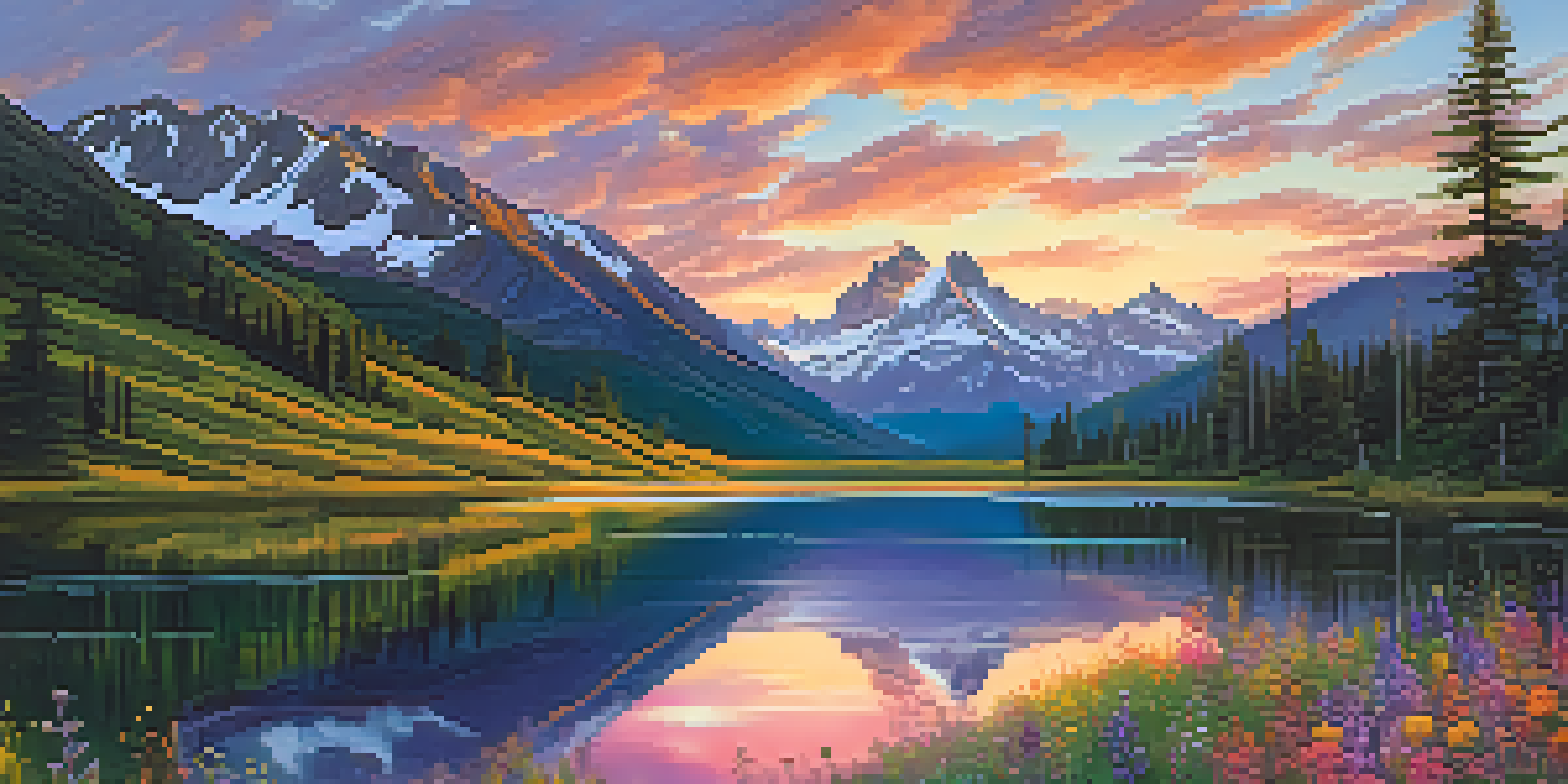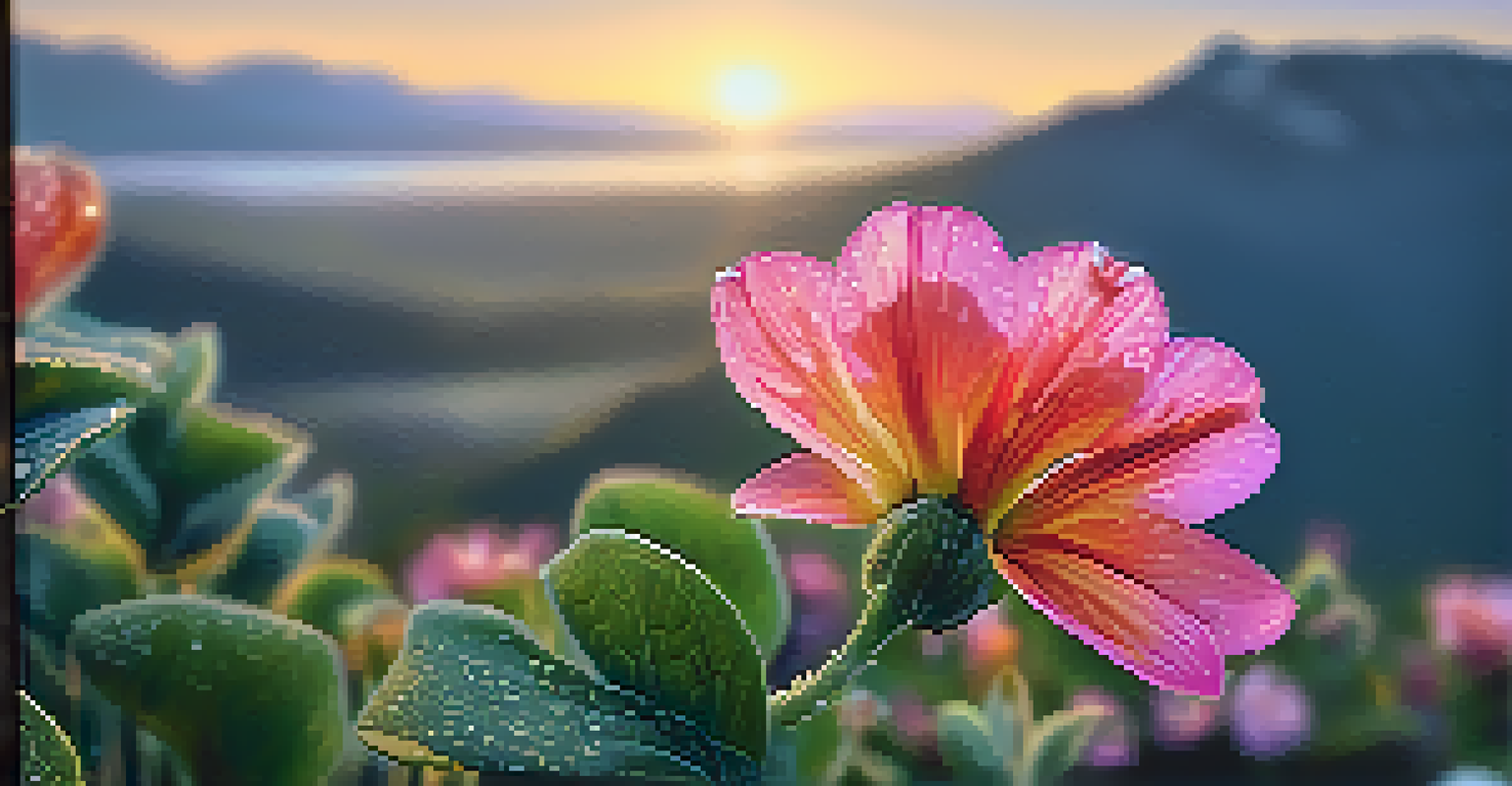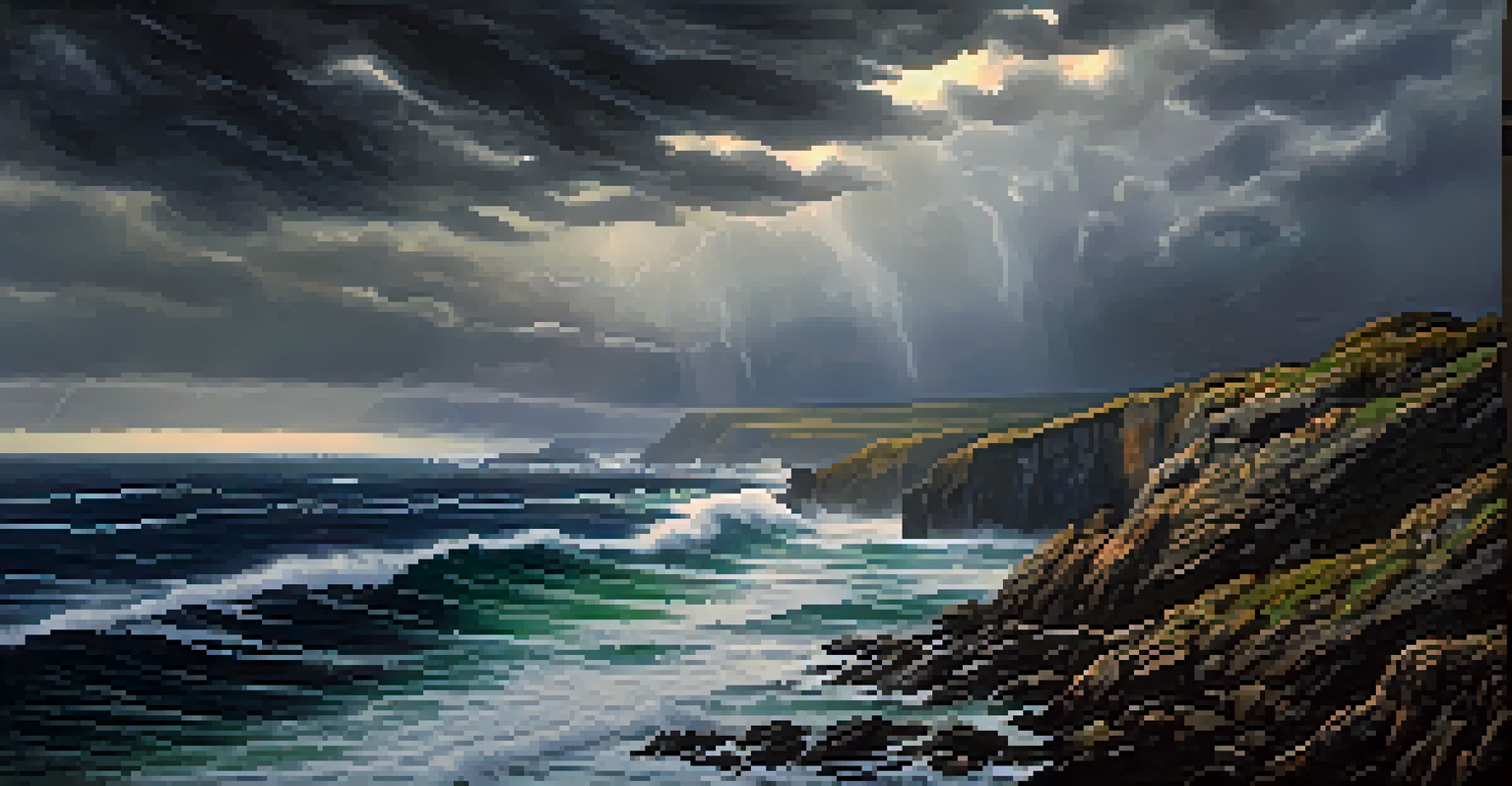How to Choose the Right Lens for Landscape Photography

Understanding the Basics of Camera Lenses
Before diving into landscape photography, it's essential to understand the basic components of camera lenses. Lenses are crucial as they determine how much light enters your camera and the clarity of your images. Factors like focal length and aperture play significant roles in shaping your photos, especially in vast landscapes.
The camera is an instrument that teaches people how to see without a camera.
Focal length is measured in millimeters (mm) and affects how much of a scene you can capture. Shorter focal lengths (like 14mm to 24mm) offer a broader view, making them ideal for sweeping landscapes. In contrast, longer focal lengths (like 70mm to 200mm) can help isolate specific elements within a scene, adding depth and interest.
Aperture, represented by f-stops, controls the amount of light entering the lens and affects the depth of field. A wider aperture (like f/2.8) allows more light but creates a shallow depth of field, which can blur backgrounds. Conversely, a smaller aperture (like f/16) sharpens the entire scene, perfect for landscapes where you want everything in focus.
Choosing Focal Length for Landscape Shots
Selecting the right focal length is crucial for capturing the essence of a landscape. Wide-angle lenses, typically ranging from 14mm to 35mm, are favored for their ability to capture expansive scenes. This perspective can create a sense of grandeur, making mountains, valleys, and oceans appear even more impressive.

However, don’t overlook the versatility of standard lenses, like a 24-70mm zoom. These lenses offer a range of focal lengths, making them suitable for various compositions. They allow you to capture both sweeping vistas and detailed shots of interesting foreground elements, giving your landscape photos more depth.
Select Focal Length Wisely
Choosing the right focal length enhances the composition of landscape photos, with wide-angle lenses capturing vast scenes and telephoto lenses isolating specific elements.
For photographers seeking to create dramatic images, telephoto lenses (70mm and above) can be a great choice. They allow you to compress the scene and bring distant subjects closer, which can enhance the layers in your composition. This technique is particularly effective in mountainous terrains, where you want to highlight unique features from afar.
The Importance of Aperture in Landscapes
Aperture settings are essential in landscape photography, directly influencing the exposure and depth of field. For landscapes, a smaller aperture (like f/11 to f/16) is typically recommended, as it ensures that more of the scene is in focus. This is vital when photographing vast landscapes, where you want to capture every detail from foreground to background.
Photography is the story I fail to put into words.
Using a smaller aperture can also enhance the sharpness of your images, creating stunning clarity that draws viewers in. However, it's important to balance this with shutter speed; too small an aperture might require a longer exposure time, increasing the risk of camera shake. Utilizing a tripod can help stabilize your camera during these longer exposures.
Additionally, wider apertures can be used creatively for landscapes. They can isolate specific elements, like a vibrant flower in the foreground against a blurred mountain backdrop. This technique adds a unique artistic touch and can help direct the viewer's attention to the focal point of your composition.
Considering Lens Type: Prime vs. Zoom
When choosing a lens for landscape photography, you'll encounter two main types: prime and zoom lenses. Prime lenses have a fixed focal length, meaning they offer excellent optical quality and typically have wider apertures. They are often lighter and simpler, making them great for hiking or long shoots, but they require you to physically move to frame your shot.
On the other hand, zoom lenses provide versatility, allowing you to change focal lengths without swapping lenses. This adaptability can be particularly useful in landscapes where you encounter different compositions quickly. You can go from wide shots capturing a sunset over a valley to tighter shots of interesting rock formations without missing a beat.
Aperture Impacts Depth of Field
Aperture settings play a crucial role in landscape photography, where smaller apertures keep more of the scene in focus, while wider apertures can creatively isolate subjects.
Ultimately, the choice between prime and zoom lenses depends on your shooting style and preferences. If you prioritize image quality and have a specific scene in mind, a prime lens might be your best bet. However, if you value flexibility and spontaneity in capturing landscapes, a zoom lens is a worthy companion.
Understanding Lens Distortion in Landscapes
Lens distortion is an important factor to consider in landscape photography, as it can affect the overall composition of your images. Wide-angle lenses, while great for capturing expansive scenes, can introduce barrel distortion, causing straight lines to appear curved. This can be particularly noticeable in architectural landscapes or when photographing horizons.
To minimize distortion, it's essential to choose high-quality lenses known for their optical performance. Many modern lenses come with built-in features to correct distortion, and software solutions in post-processing can also help. Understanding how distortion works allows you to make informed choices about your compositions and lens selections.
Accepting some level of distortion can also be beneficial for creative expression. It can add a dynamic quality to your images, drawing the viewer's eye across the frame. By embracing distortion and using it to your advantage, you can create unique and memorable landscape photographs.
The Role of Filters in Landscape Photography
Filters can be invaluable tools in landscape photography, enhancing your images and helping manage challenging lighting conditions. A polarizing filter, for example, reduces glare and enhances colors, making the sky bluer and the foliage greener. This is particularly useful when photographing landscapes under bright sunlight, where reflections can wash out details.
Neutral density (ND) filters also play a crucial role, allowing you to reduce the amount of light entering the lens without altering color. This enables longer exposure times, perfect for capturing dreamy water effects in rivers or smoothing out clouds in the sky. By using ND filters, you can achieve stunning effects that elevate your landscape photography.
Experiment with Lenses and Techniques
Experimenting with different lenses and shooting techniques fosters creativity and helps photographers discover the best ways to capture stunning landscapes.
When incorporating filters, it's essential to ensure they are of high quality to avoid introducing unwanted color casts or distortion. Investing in reputable brands can make a significant difference in the final outcome of your images. Filters, when used thoughtfully, can help you capture landscapes in all their glory.
Experimenting with Different Lenses and Techniques
One of the best ways to choose the right lens for landscape photography is to experiment with different options. Each lens brings a unique perspective, and trying out various focal lengths and types can lead to unexpected and exciting results. Don’t hesitate to switch lenses during a shoot to capture a scene from multiple angles.
In addition to experimenting with lenses, consider varying your shooting techniques. For example, try using foreground elements to create depth, or shoot during different times of the day to see how lighting affects your compositions. Each technique can help you discover how different lenses perform in various situations.

Ultimately, the key is to keep learning and growing as a photographer. By embracing experimentation and being open to new ideas, you'll develop a deeper understanding of how to choose the right lens for your landscape photography, leading to breathtaking results.